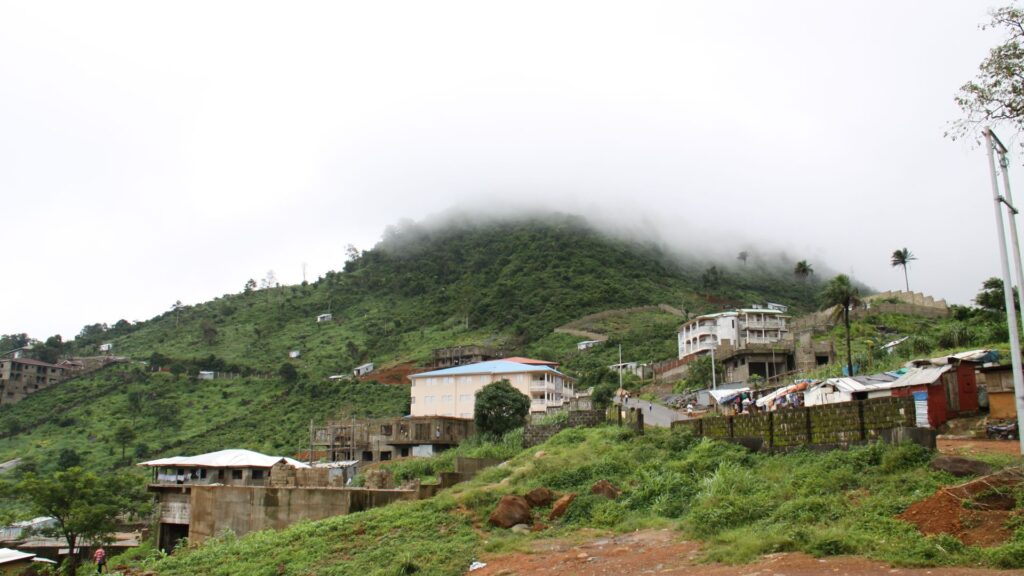Freetown is the capital and largest city of Sierra Leone, located in the Western Area of the country. It is a bustling metropolis with a population of over one million people, making it the economic, cultural, and political center of Sierra Leone.
The city is known for its unique history, as it was founded in 1792 as a settlement for freed slaves from the Americas and United Kingdom. This history is still evident today in the diverse cultural influences found throughout Freetown, from the cuisine to the music to the architecture.
One of the most iconic landmarks in Freetown is the Cotton Tree, a massive tree that has stood in the city center for centuries and is considered a symbol of freedom and unity. The city also boasts beautiful beaches along the Atlantic coastline, such as Lumley Beach and River Number Two Beach, where locals and tourists alike flock to relax and enjoy the sun.
Freetown is a vibrant city with a lively nightlife scene, bustling markets, and a rich array of restaurants serving traditional Sierra Leonean dishes as well as international cuisine. The city also has a number of museums and historical sites that offer a glimpse into its past, including the National Museum and the Sierra Leone Peace Museum.
Despite its beauty and charm, Freetown faces challenges such as overcrowding, inadequate infrastructure, and occasional outbreaks of diseases such as cholera and Ebola. However, the resilient spirit of the people of Freetown shines through, and the city continues to thrive and offer a unique and unforgettable experience to visitors from around the world.
What to explore:
1. Sierra Leone National Museum – Located in Freetown, this museum showcases the country's rich history and cultural heritage through a collection of artifacts and exhibits.
2. Cotton Tree – This historic tree is a symbol of Freetown and is believed to have been the spot where the first settlers in Sierra Leone gathered in 1787.
3. Tacugama Chimpanzee Sanctuary – A non-profit organization dedicated to the rescue, rehabilitation, and release of chimpanzees back into the wild. Visitors can learn about these amazing animals and even get a chance to see them up close.
4. Lumley Beach – This popular beach in Freetown is a great spot for relaxing, swimming, and enjoying the beautiful coastline of Sierra Leone.
5. The Slave Gate – A sobering reminder of Sierra Leone's dark past as a hub for the transatlantic slave trade. Visitors can learn about the history of the slave trade in the region and reflect on its impact.
6. Bunce Island – Located near Freetown, this historic island was a major slave trading post during the 18th century. Visitors can take a boat tour to explore the ruins and learn about the island's dark past.
7. Aberdeen Market – A bustling local market in Freetown where visitors can shop for traditional crafts, clothing, and souvenirs.
8. Outamba-Kilimi National Park – Located near Freetown, this national park is home to a variety of wildlife, including elephants, hippos, and chimpanzees. Visitors can go on safari tours and enjoy the natural beauty of Sierra Leone.
9. St. John's Maroon Church – An important historic site in Freetown that dates back to the 19th century. The church is a symbol of the Maroon community's struggle for freedom and independence.
10. The Cotton Tree – Another important landmark in Freetown, the Cotton Tree is a giant tree that has stood for centuries and is believed to have spiritual significance for the people of Sierra Leone.
